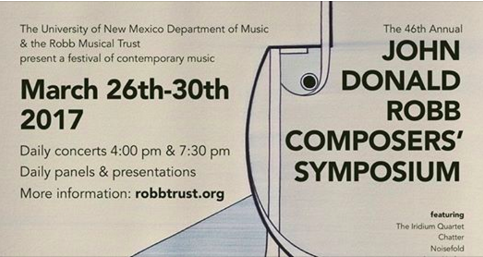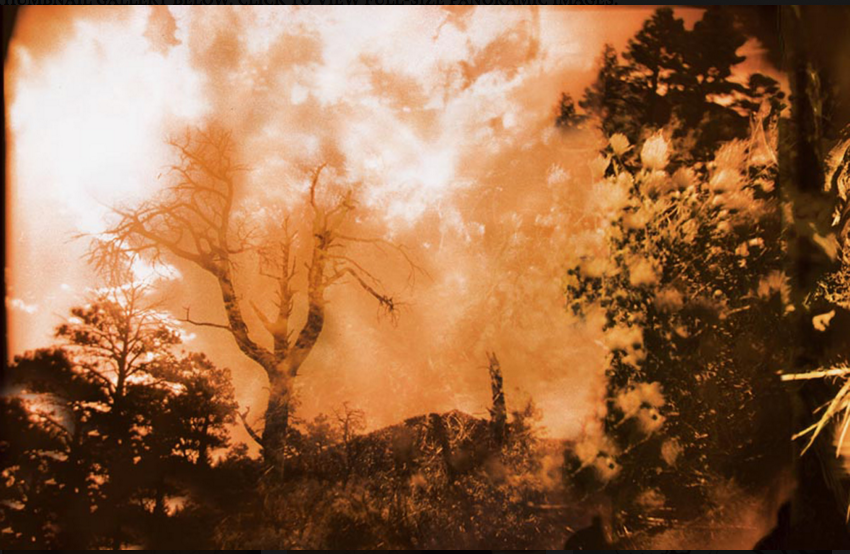March 20, 2017

Delighted that my collaborative video-text-and-music piece WUPATKI – HOUSES OF THE ENEMIES – a collaboration with composer Pamela Madsen – will be featured in the 46th Annual John Donald Robb Composers’ Symposium at University of New Mexico. With special project support thanks to my Creative Capital fellowship.
Quintan Ana Wikswo’s WUPATKI / HOUSES OF THE ENEMIES is a meditation surrounding a site at the crossroads of gender, death and the desert: this point of land at the edge of the Mesozoic spone of the Grandmothers volcano field contains the home of the Spider Woman Na’ashjéii Asdzáá, crumbling pueblos, a Hopi vulvic worship site, an ancient astronomical observatory, earthquake fault lines, a volcano with its apocalyptic ash and lava fields, the current reservation of the Navajo Nation…and the vestiges of genocidal crimes against the native nations and the present-day femicides on the desert borderlands between the United States and Mexico.
WUPATKI is an interdisciplinary suite of the artist’s photographs, prose poem texts, essays, installation films, and both solo and collaborative live performance works.
Here’s a bit of information about this piece, and a clip from the video installation. http://www.quintanwikswo.com/projects/wupatki-houses-of-the-enemies/

ARTIST STATEMENT
The buildings, civilization, and geology of Wupatki are anciently female, sexual, sacred in a way our society no longer “sees.” First encountering Wupatki with a girlfriend, my earliest experiences with the site have been within a female, sacred, sexual relationship that our society likewise refuses to “see.” Wupakti itself – like female sexuality, and queer sexuality, and the knowledge held by ancient peoples – remains misunderstood, overlooked, and obscured….not seen.
At the edge of Arizona’s Painted Desert and separated from the Navajo Nation by a shallow riverbed, Wupatki’s red-brown sandstone pueblo towers border the Mesozoic spine of The Grandmothers volcano field (also known as the San Francisco Peaks), whose vertebrae of over seven hundred volcanoes curve along nearly two thousand square miles. The strong, rounded limbs of the pueblos emerge muscular from the peaks and ravines of an earthen female form.
A millennium later, questions surround the intent of their construction and placement, deliberately gridded out along a carefully aligned map of earthquake fault lines, volcanoes, sinkholes and blowholes, celestial constellations, astronomical positions, and geological aberrations. A place of openings and explosions, creations and destructions, many people believe the predecessors to the Hopi built these pueblos amidst the lava and black ash as a shamanic worship site to a spider-like geo-goddess of creation and destruction.
The reason why I’m interested in this place is because it’s one of the few places on earth where all these lines of visibility and invisibility intersect. And I like intersections and collisions of the past into the future-present.
I’ve been creating this series of poems, photographs and films at Wupatki for over eight years, working with salvaged antique military and battlefield film cameras and typewriters. The prismatic spectrum and fragmentation of time informs my layering of image and text, exactly as they are refracted through the lenses and viscera of my damaged instruments – I don’t use any digital or software effects. The voice of these works comes from manipulating the optical and physical distortions in the equipment, and from embracing the inherent “ruin” of the instruments themselves. The chemistry and optics of these war-torn instruments record better than anything I can think of what spirals and coils at these sites—what remains, what lingers, what still exists.
I feel a bit amused by the puzzle of discussing places in a straightforward, accessible way that can be shared with others. By the time I spend years at these places and question their lost ecological and geological and spiritual and anthropological and social and gender and military histories in every way I know how, I learn an immense amount of hidden and overlooked knowledge about them. I also spend a lot of time simply looking and listening and dreaming.
Perhaps the process I undergo is one of abstraction – I start with an infinite matrix of mysteries, and then I enter it and go down and down and down and down through the grid of knowledge until it’s all a prismatic multiplicity of voices and colors and textures and sounds, and there’s nothing left that is monolithic and coherent. The narrative itself fractures, and erodes.
My body of work “The Houses of the Enemies” is, on the simplest level, a series of questions: how do we find a way to read what has been erased? How do we begin to look at what is overlooked? How do we learn to see what is unseen?
